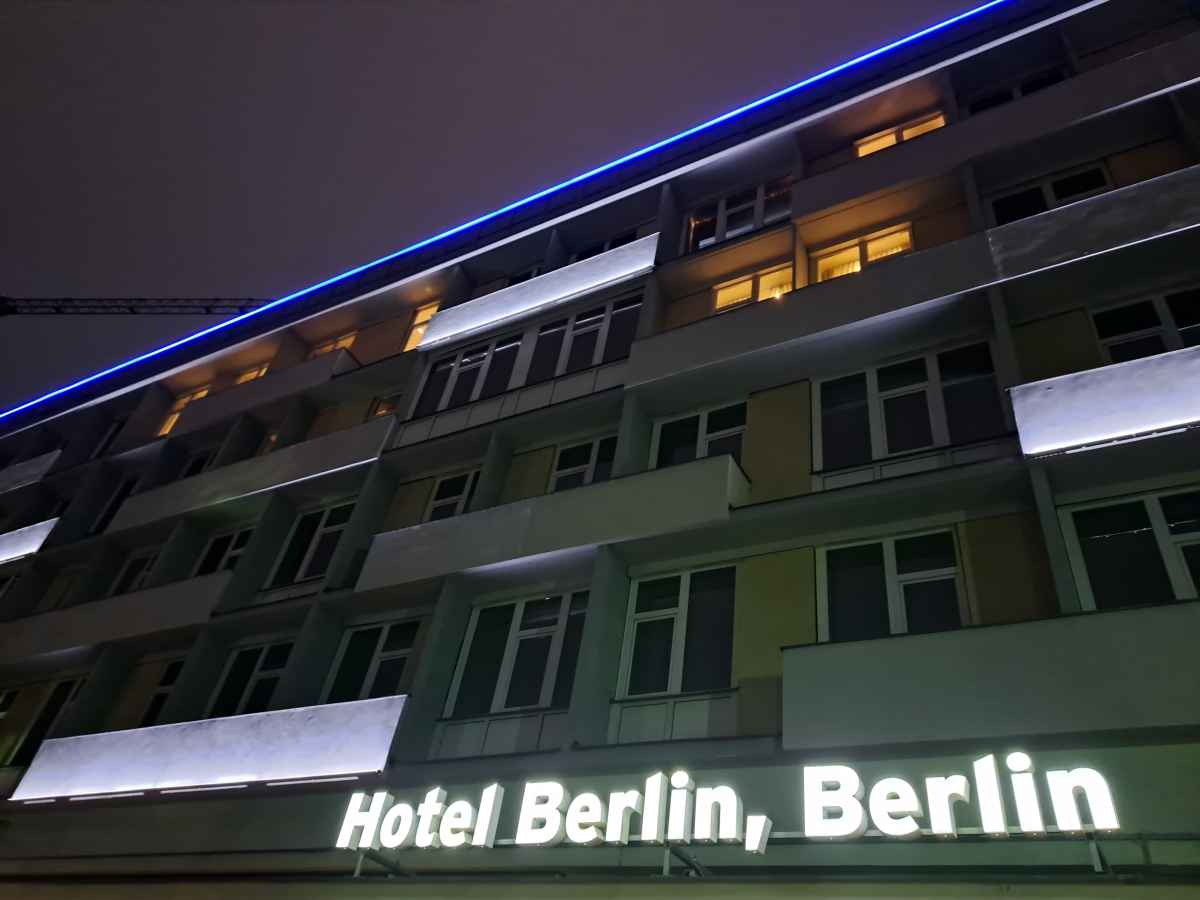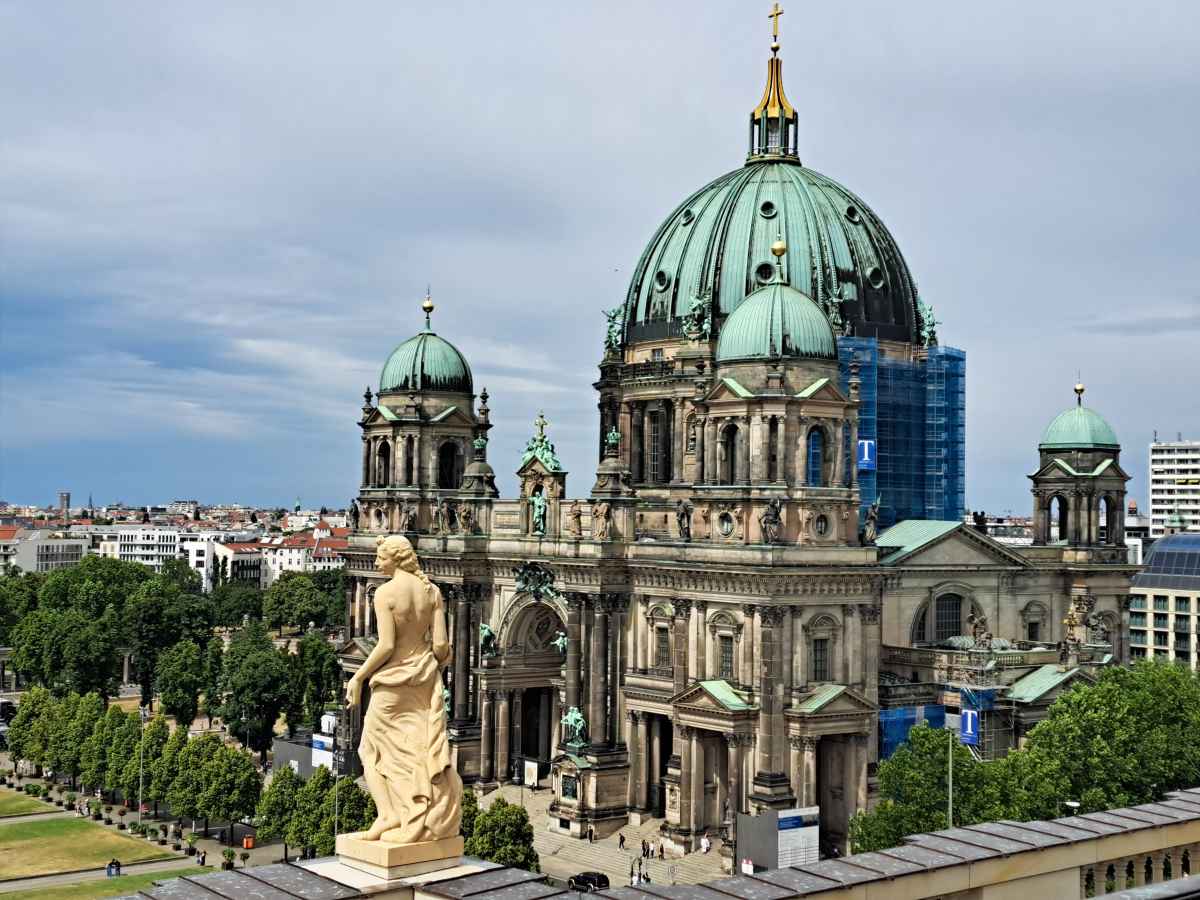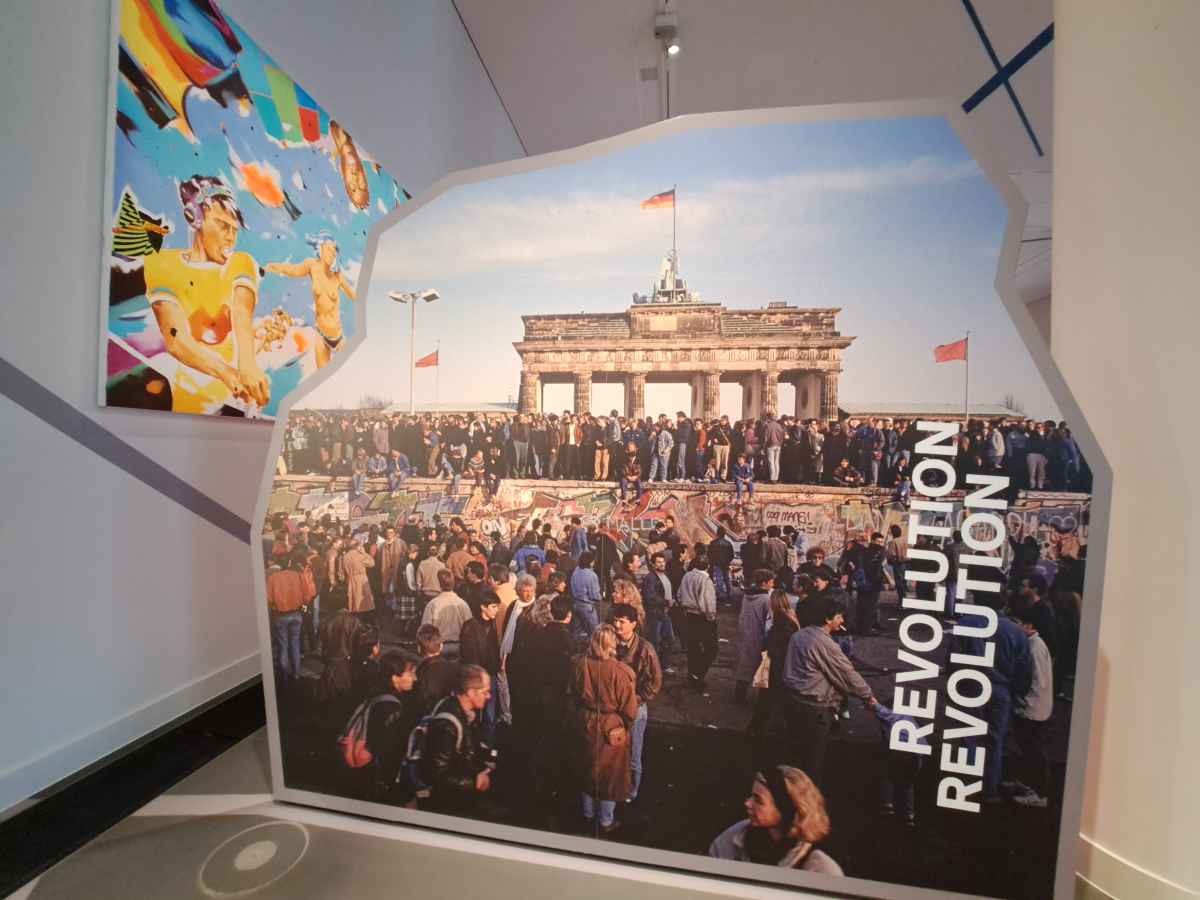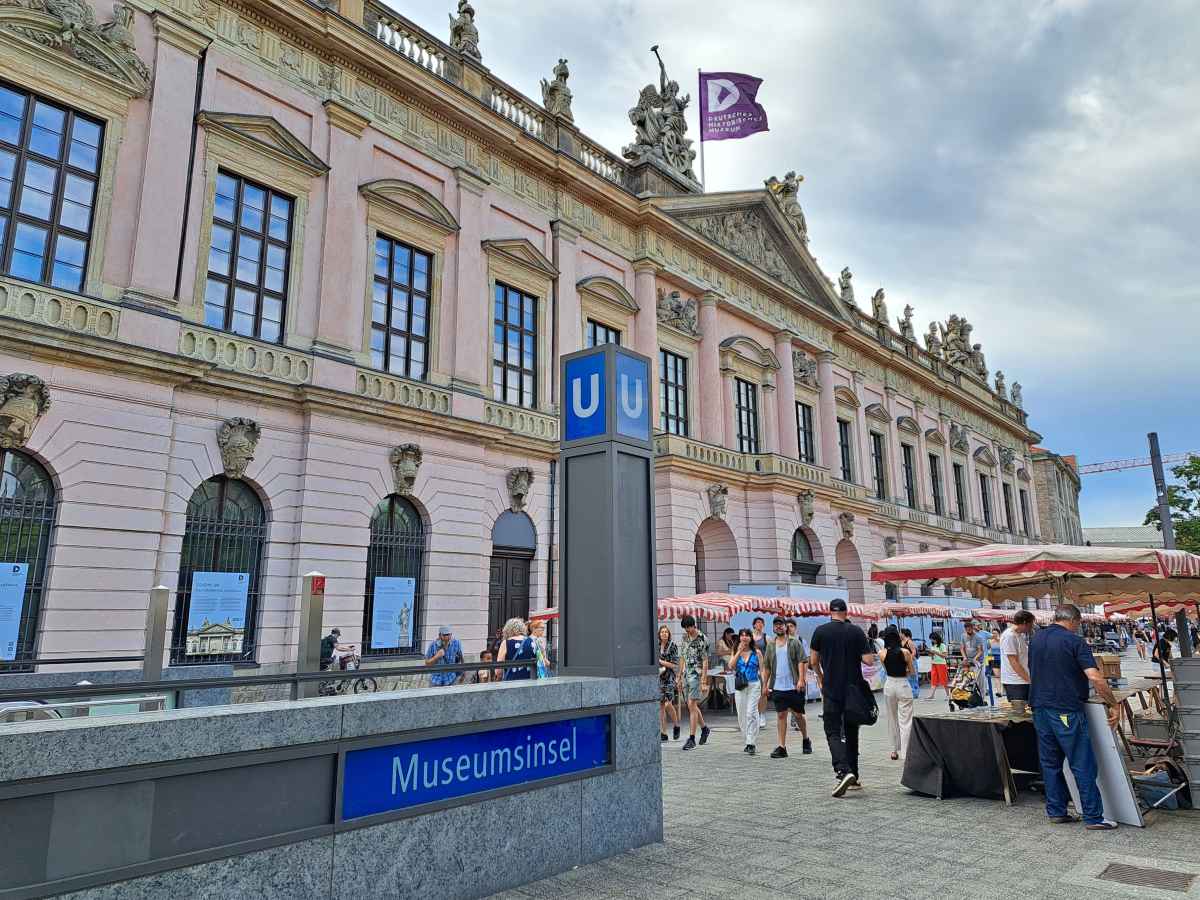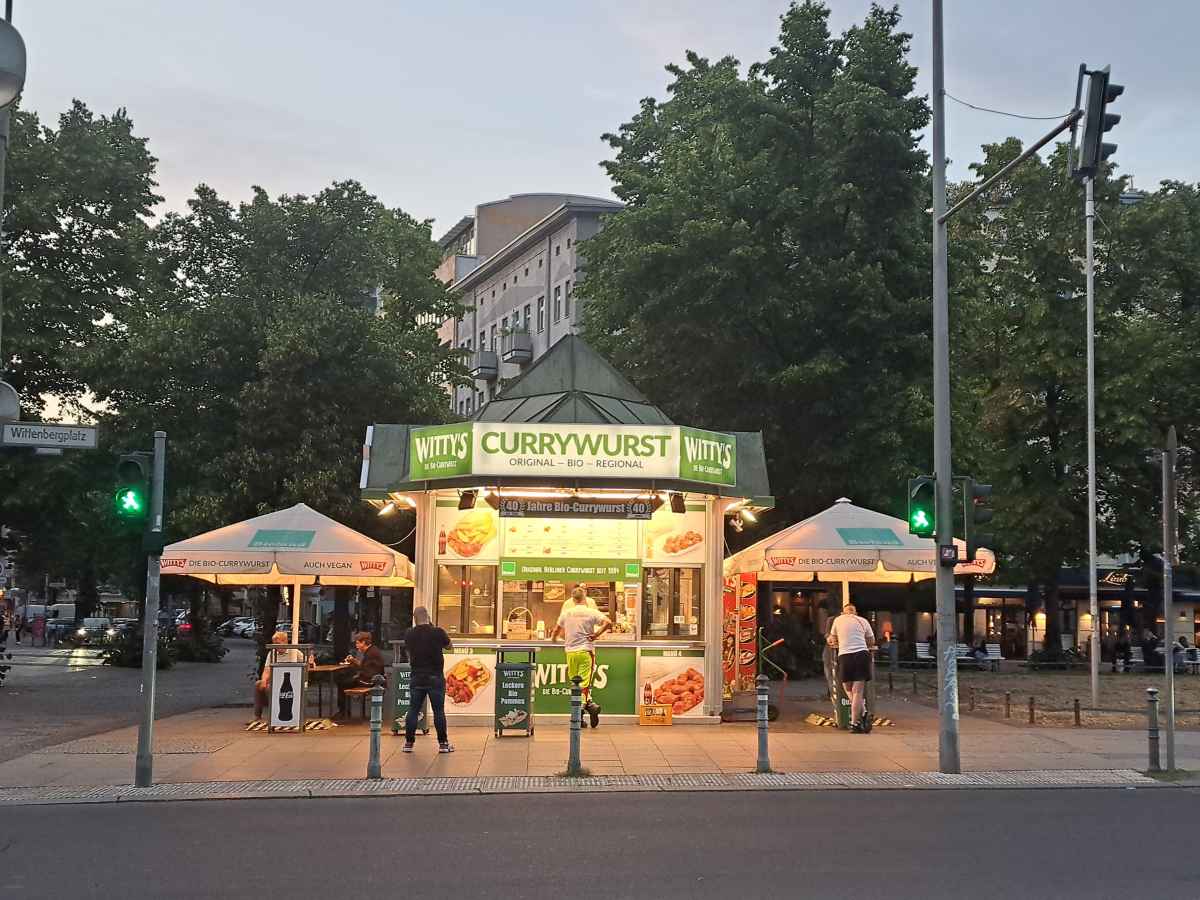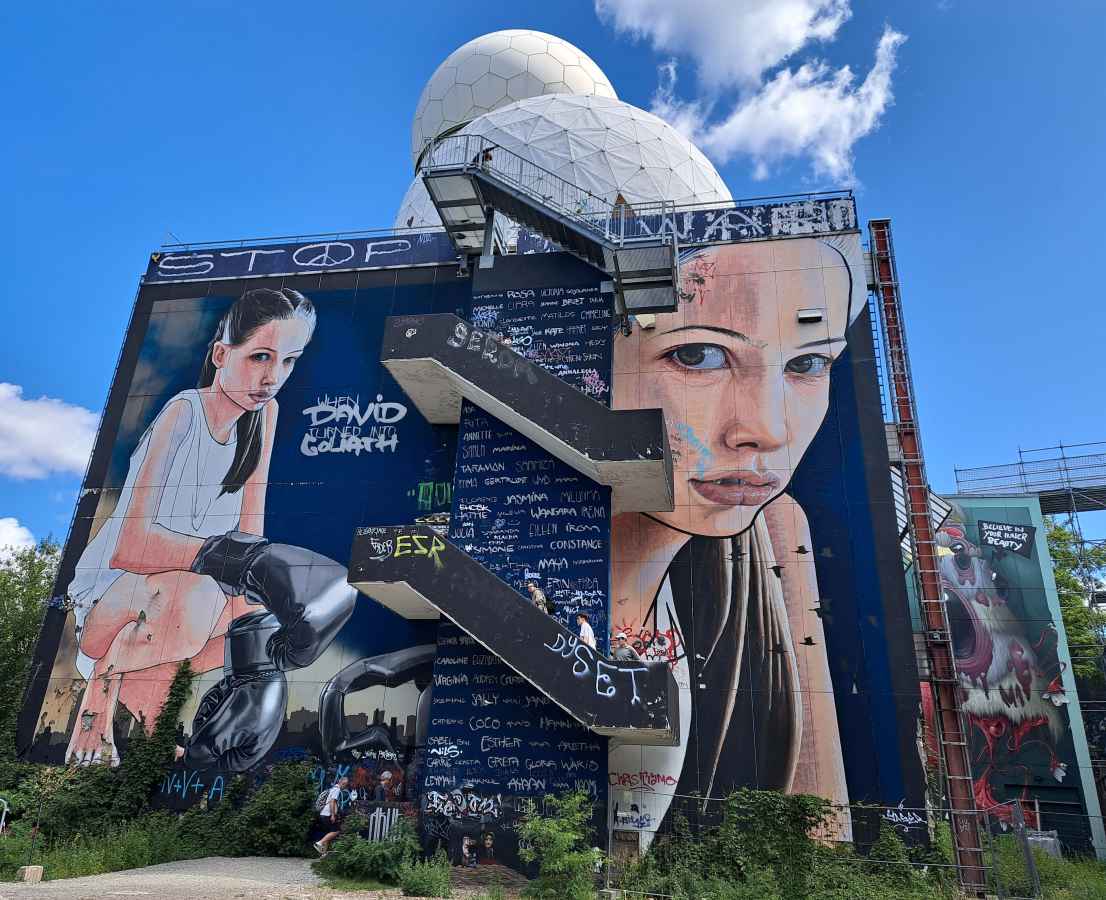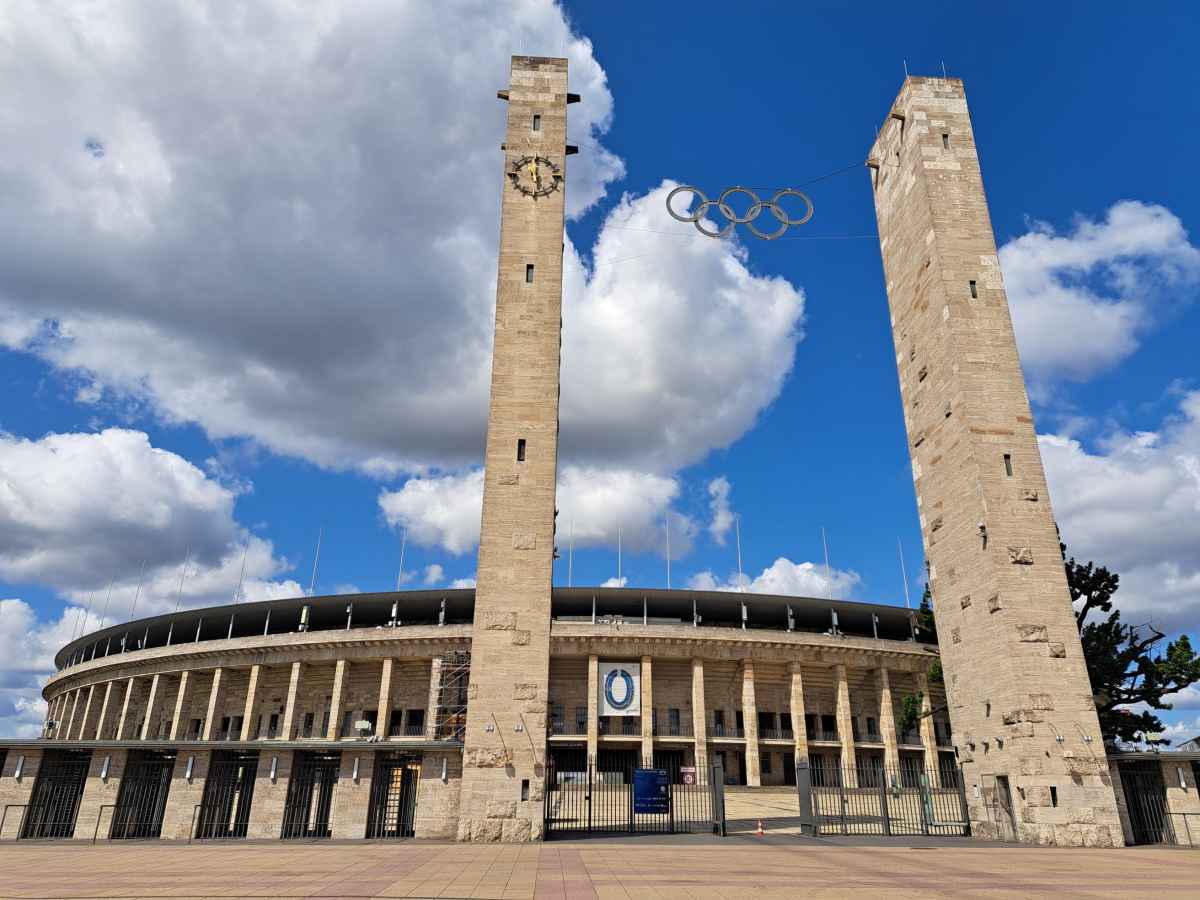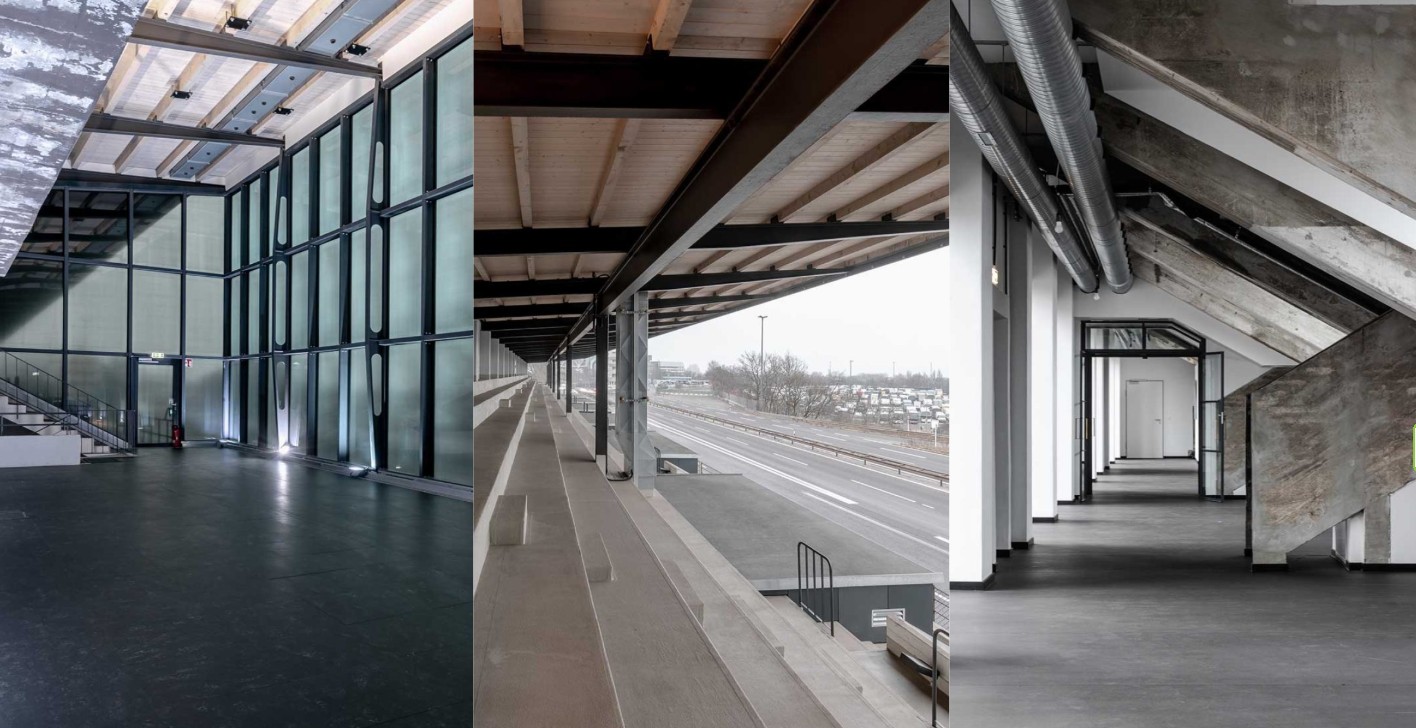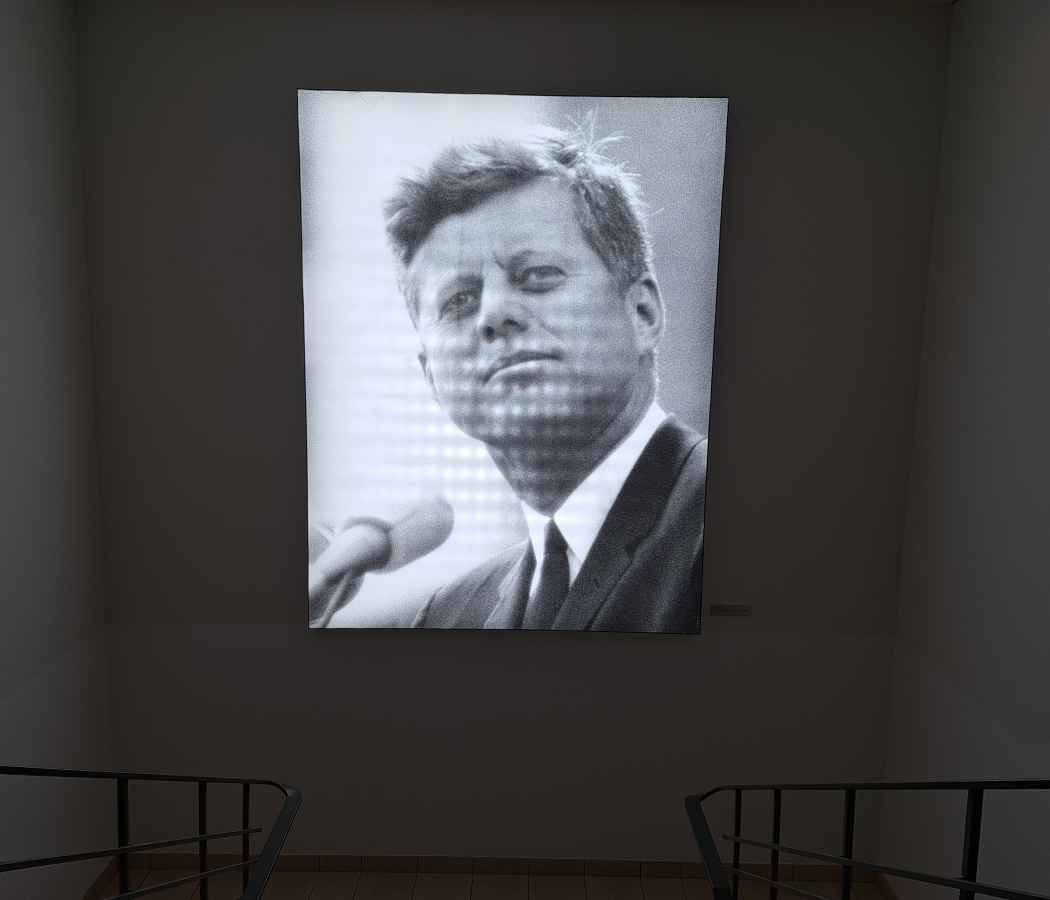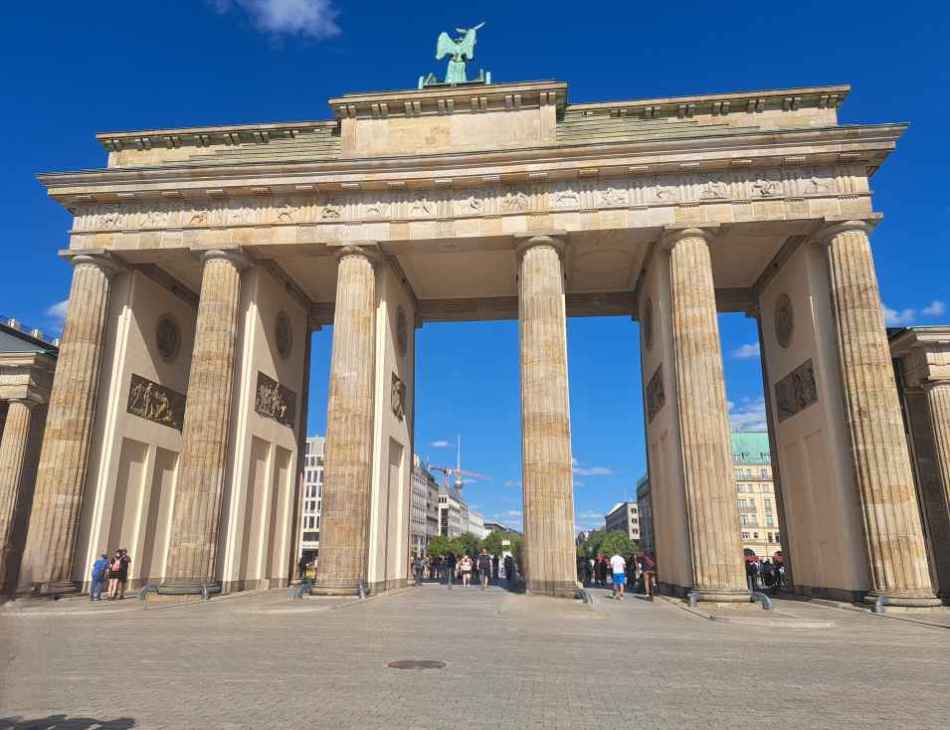Hotel Berlin: Berlin Moves With The Times
“Much of what happens in Berlin changes the world and much of what happens in the world affects Berlin”. A city like no other, Berlin conjures the imagination in so many ways, from street art to street food, nightlife to living-history attractions, Ramy James Salameh discovers the German capital via Bikes and Bahns.
Brandenburg Gate
As I approached ‘Hotel Berlin, Berlin’ in the early evening, a neon blue strip cut across its angular façade, hinting at its mid-20th century roots while embracing the city’s constant evolution. Inside, an LED banner wrapped itself above the self-service reception, flashing contemporary art, just one example of the hotel’s blend of design, innovation and sustainability.
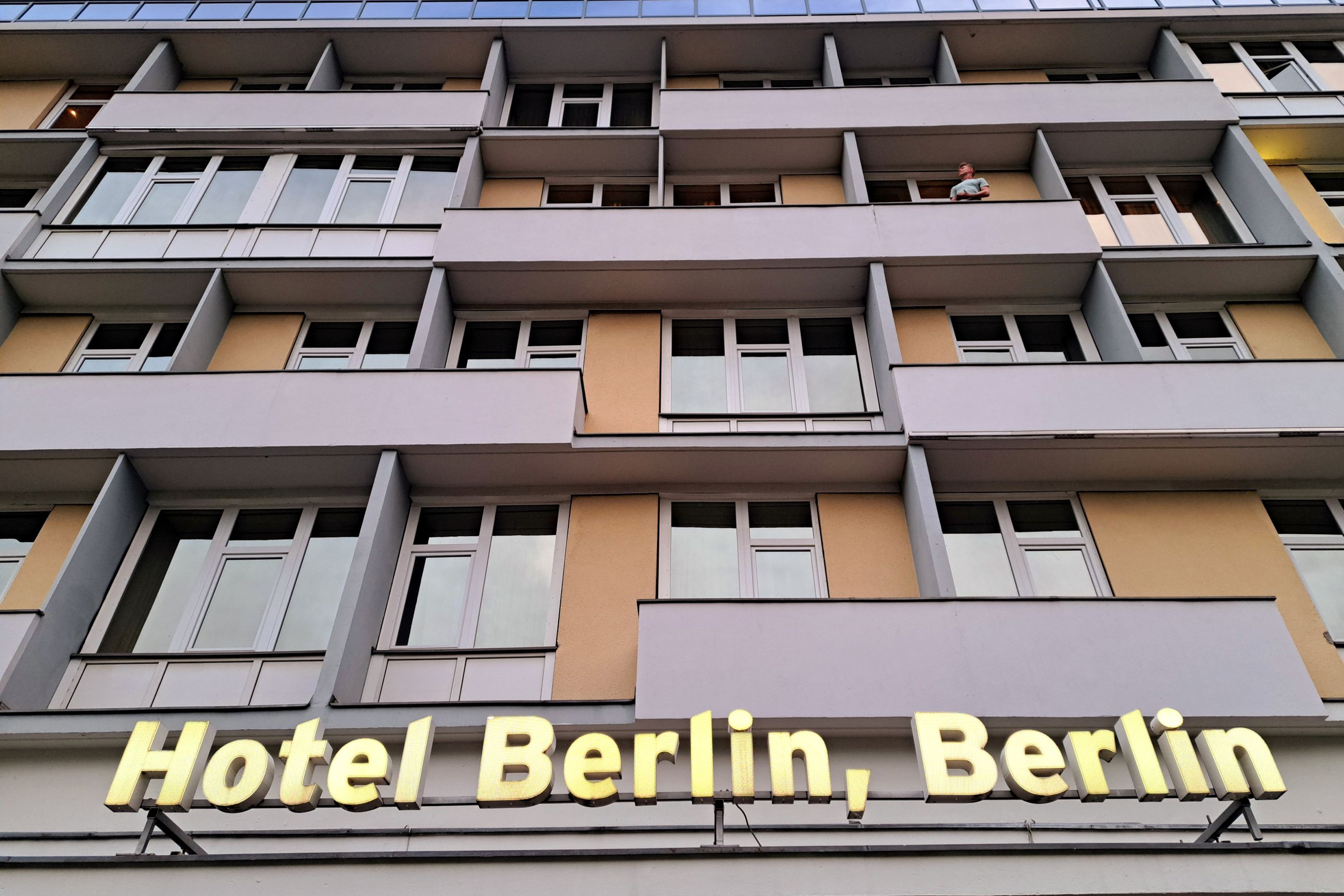
The 701-room property fills an entire block in west Berlin’s lively Mitte district. The self-service check-in zone connects with several of the open-plan spaces headlined by a café-bar and alfresco courtyard. In-between both, a watchful portrait of John F Kennedy hovers above a staircase which descends towards the fitness centre and sauna.
Further exploration of the ground-floor, reveals the hotel’s playful edge. More famous faces portray the hotels narrative around their ‘Insiders & Icons’ gallery, a 'who's who' portrayal of people who have left their mark on the city, from 'icons' such as David Bowie to local dancers, magicians and artists – ‘the Insiders’, who curate and share their own perspectives of Berlin through arts and popular culture.
Hotel Berlin, Berlin has yet more surprises up its sleeve, with its own ‘Royal Table Tennis Klub,’ an in-house skate ramp, and a mezzanine art exhibition space, all of which firmly nods to Berlin’s creative pulse.
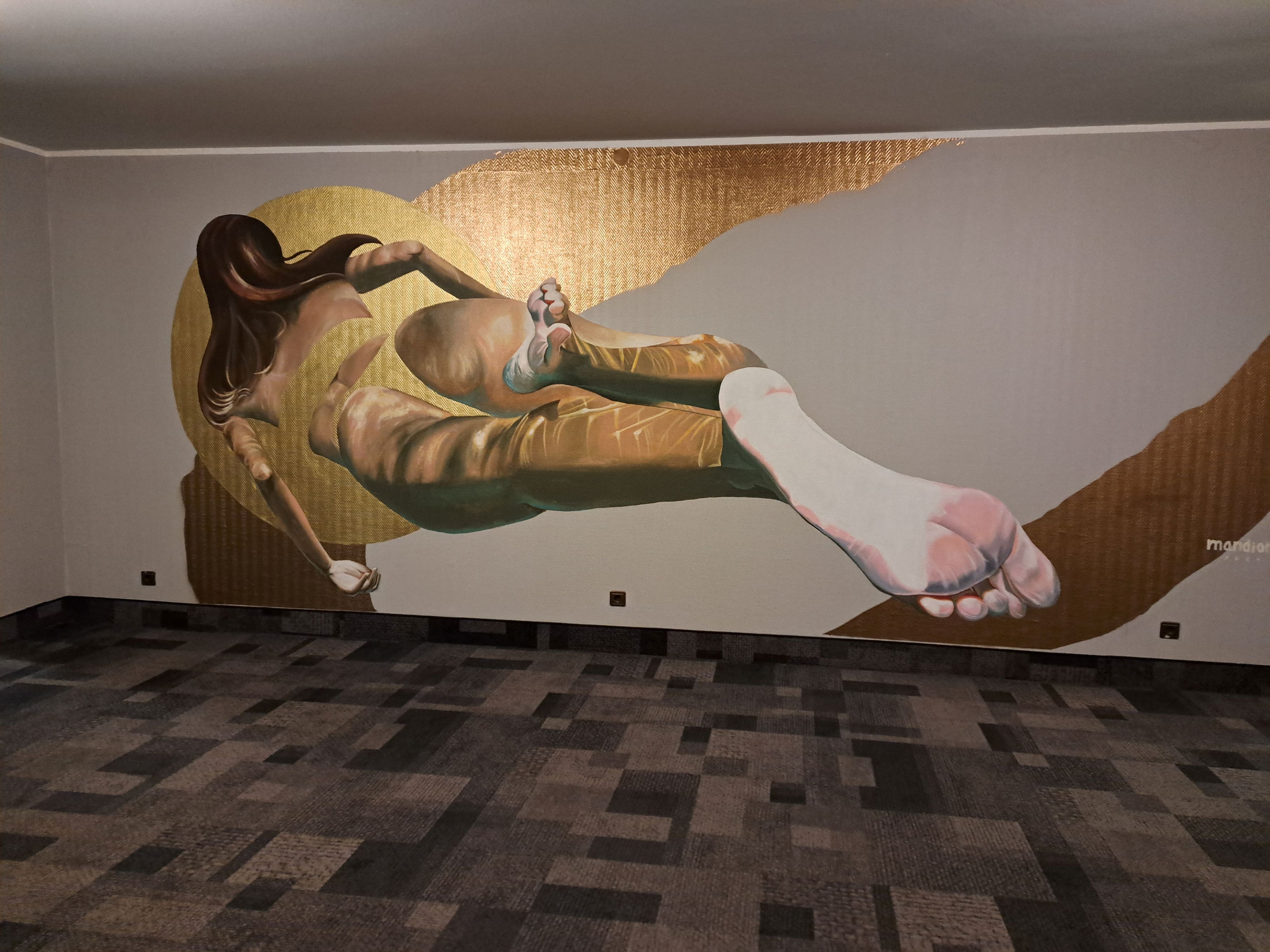
Heading to my room the lift doors opened to a large wall-mural reflecting Berlin's street art culture. In hues of gold, yellow and bronze, this impactful painting of a women swimming into the direction of the rooms, is a striking reminder of the city’s rebellious spirit, and the continuing power of graffiti-art as an alternative medium for Berliners to express themselves; once a form of protest on the Berlin Wall, now thrives as a celebrated part of the city’s identity.
“You, Me & Berlin” & Museum Island
All of the well-appointed and spacious rooms carry the “You, Me & Berlin” concept. It cleverly connects local Berliners with future guests, through letters, images and maps which create a visually striking part of the in-room décor, but also with a practical side too, offering advice and personal travel tips. My in-room letter was written by a Berliner who happened to be a cyclist, introducing his favourite cycle paths, secret tips and attractions, perfect synergy with the hotel’s “Bed & Bike” initiative, which I was keen to take advantage of. “Bed & Bike” makes it easy for guests to get into the saddle through bike rentals, charging stations with secure storage and dedicated route maps, all making it the go-to choice for cycle enthusiasts.
Close to the hotel, the ‘European Cycle Route R1’ meanders through Berlin running from west to east passing many prime attractions, including Museum Island, celebrating its 200th anniversary this year. Using Berlin's Bike-share scheme, plenty of mobility options were sitting right outside the front of the hotel. Soon, I was pedalling to the Victory Column, before disappearing under the park’s verdant canopy onto leafy cycle lanes before emerging at the iconic Brandenburg Gate. Cycling through the historic colonnades, one passes the legendary Hotel Adlon Kempinski, where everyone from royalty to heads of state and artists to rockstars have all stayed, ever since it first opened in 1907.
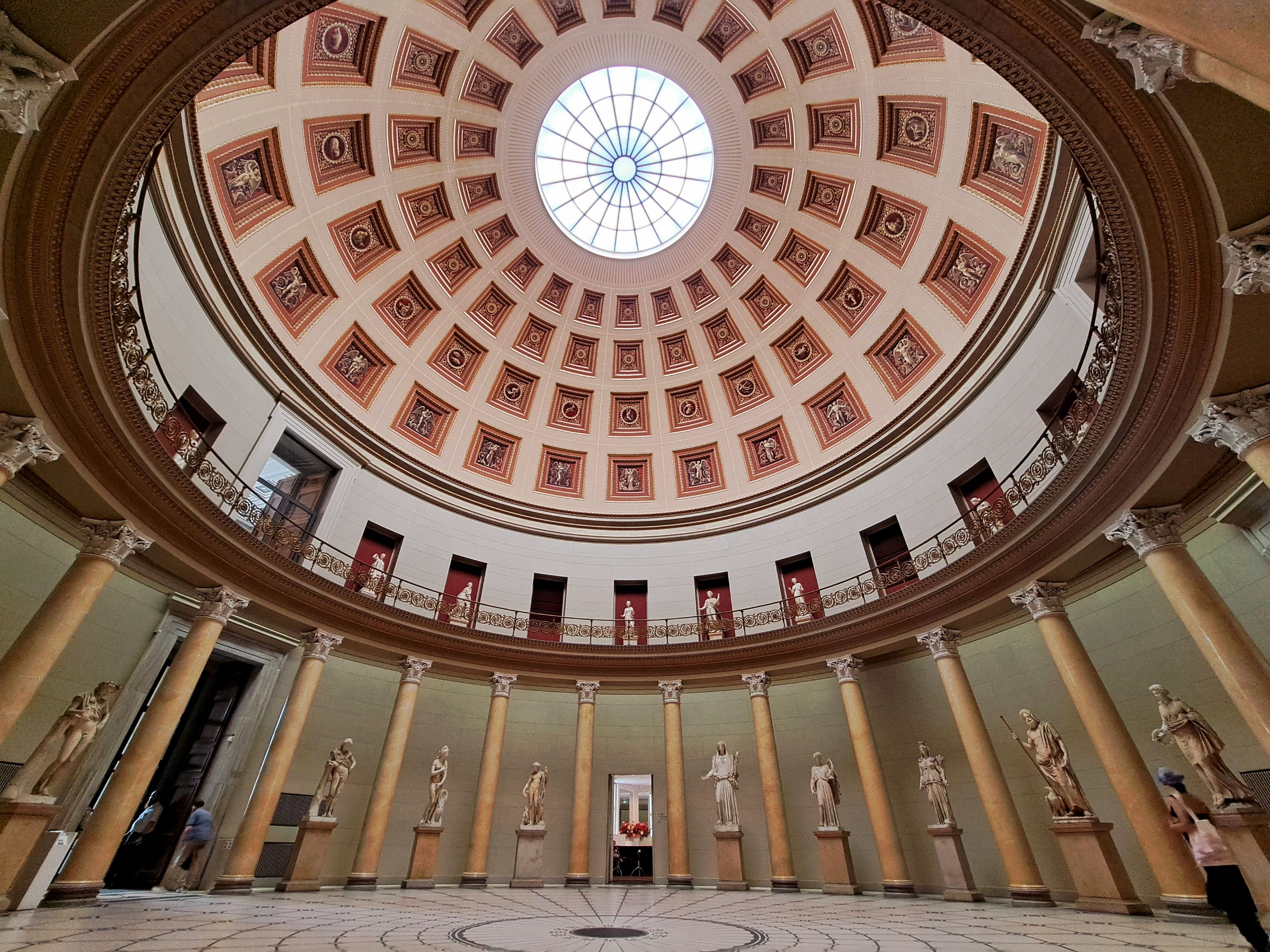
Continuing along Unter den Linden avenue, I finally arrived at Museum Island. Berlin’s UNESCO-listed cluster of five world-class museums take centre stage this year. The spotlight falls on the Altes Museum, as it is 200-years since the laying of its foundation stone in July 1825. Inside, the Altes museum’s vast ‘Rotunda’ swirls spectacularly skyward towards its circular dome, with statues of ancient gods standard guard, while the Neues Museum’s showpiece remains the 3,000-year-old bust of Nefertiti.
Depositing my bike for the next user, I was keen to see sweeping views of the island’s elegant architecture from the nearby Humboldt Forum’s roof terrace, where the Brandenburg Gate, Alexanderplatz and Berlin Cathedral, also lined the horizon. During my visit I happened upon a temporary exhibition: “Berlin Global,” a bold exposition exploring how the city and the world shape each other through the lens of Revolution, War, Boundaries, Free Space, Entertainment and Fashion, encapsulated by the mantra “much of what happens in Berlin changes the world and much of what happens in the world affects Berlin”.
Bikes to Bahns using WelcomeCard Berlin
Swapping bikes for Bahns, my ‘WelcomeCard Berlin’ gave me unfettered access to the public transport network, my new passport to delving deeper into my own list of iconic and the more obscure attractions. Graffiti art, street art, large-scale murals call it what you will, but Berlin is one of the world’s epicentres of this genre. Street art here is more than decoration, it’s expression, protest, and identity. In Friedrichshain-Kreuzberg, the East Side Gallery, remains the longest surviving stretch of the Berlin Wall, but also forms a curated gallery and a must-see open-air canvas.
Nearby, the East Side Gallery is Holzmarkt, a cooperative urban quarter, built by the community for the community and made for an ideal pitstop beside the River Spree. In many ways, Holzmarkt, reflects aspects of Berlin’s post-reunification spirit. Holzmarkt came about through people-power, with residents of Freidrichshain-Kreuzberg repelling the plans of developers by voting in a referendum in 2008. The result was a facility for everyone and the non-for-profit timber market was realised. It is a place where arts and culture, street food, music studios, event spaces and even a guesthouse converge and now call home.
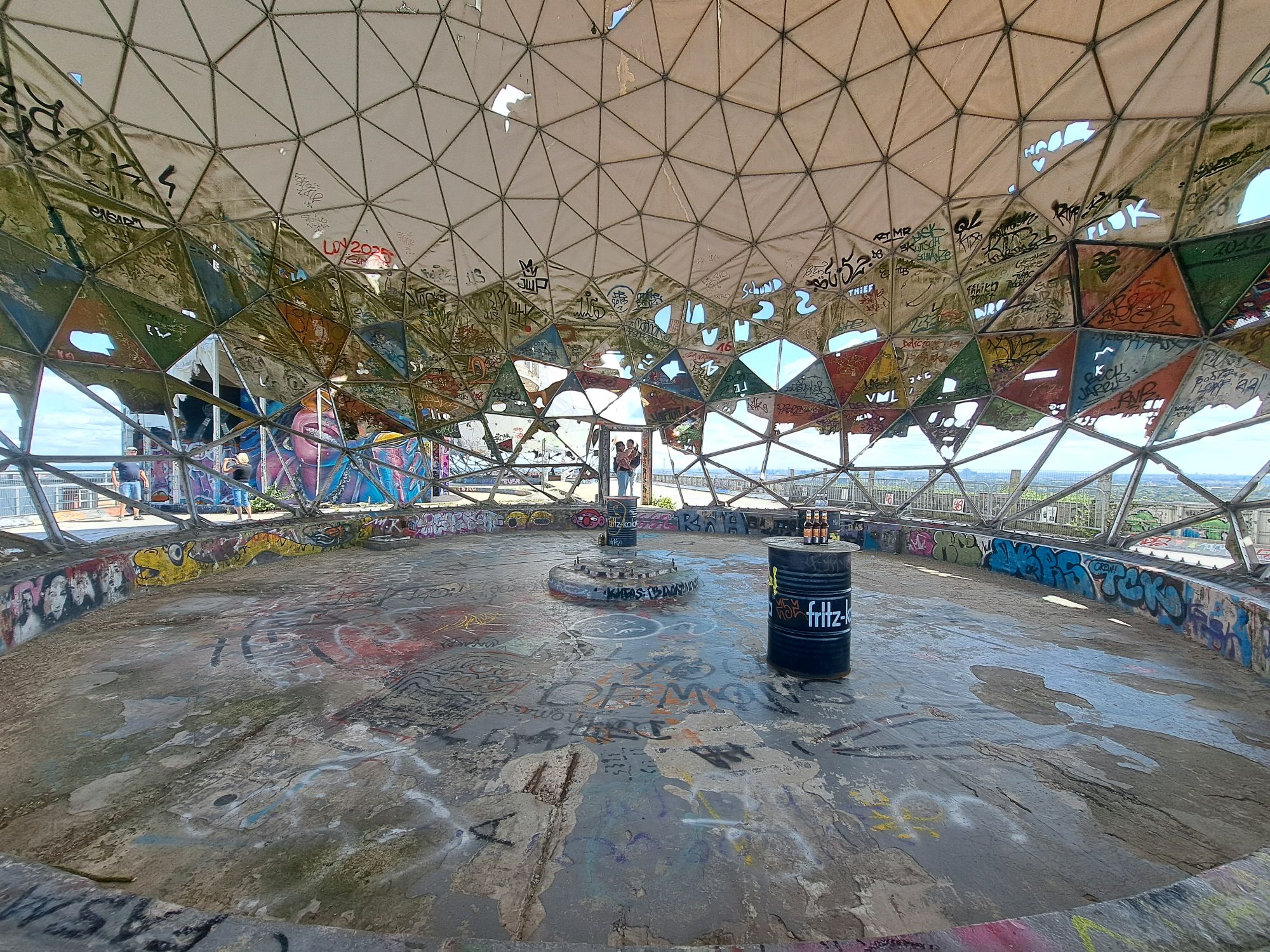
Having exchanged bike for rail, I now swapped east Berlin for west, yet kept the gritty narrative of street art at the forefront of my mind. ‘Teufelsberg’ a former Cold War listening station, was built atop WWII rubble, these eerie former military-intelligence posts where spies listened to spies using golf-ball like antenna-domes, now command imperious panoramas over swathes of green park and woodland, with landmark buildings rising above Berlin’s verdant lungs. As impressive are the skeletal and deserted, yet graffiti-covered buildings which now form Europe’s largest open-air street-art gallery boasting over 400 large-scale murals, a creative backdrop for festivals, culture and arts events, filming locations and even a podcast series.
Charlottenburg-Wilmersdorf
Whilst Madrid has ‘Barrio’ and Vienna has “Grätzel”, Berlin’s neighbourhoods are referred to as ‘Kiez’, each with their unique vibe and DNA. This was why I wanted to jump from east Berlin’s Freidrichshain-Kreuzberg to Charlottenberg-Wilmsdorf; one evolved from émigré influences, alternative lifestyles and street-arts to another born of regal elegance, where my first stop had to be the tranquil gardens and ‘Orangery’ of Charlottenburg Palace, a baroque gem with sunlit halls where former Prussian Kings and German Emperors once strolled.
Away from the palace, I wander through leafy avenues where Berliners browse the designer boutiques of Kurfürstendamm or linger over coffee at a curb-side café. Yet, within this refined district lie two legendary sporting venues, each carrying the weight of history in their own way.
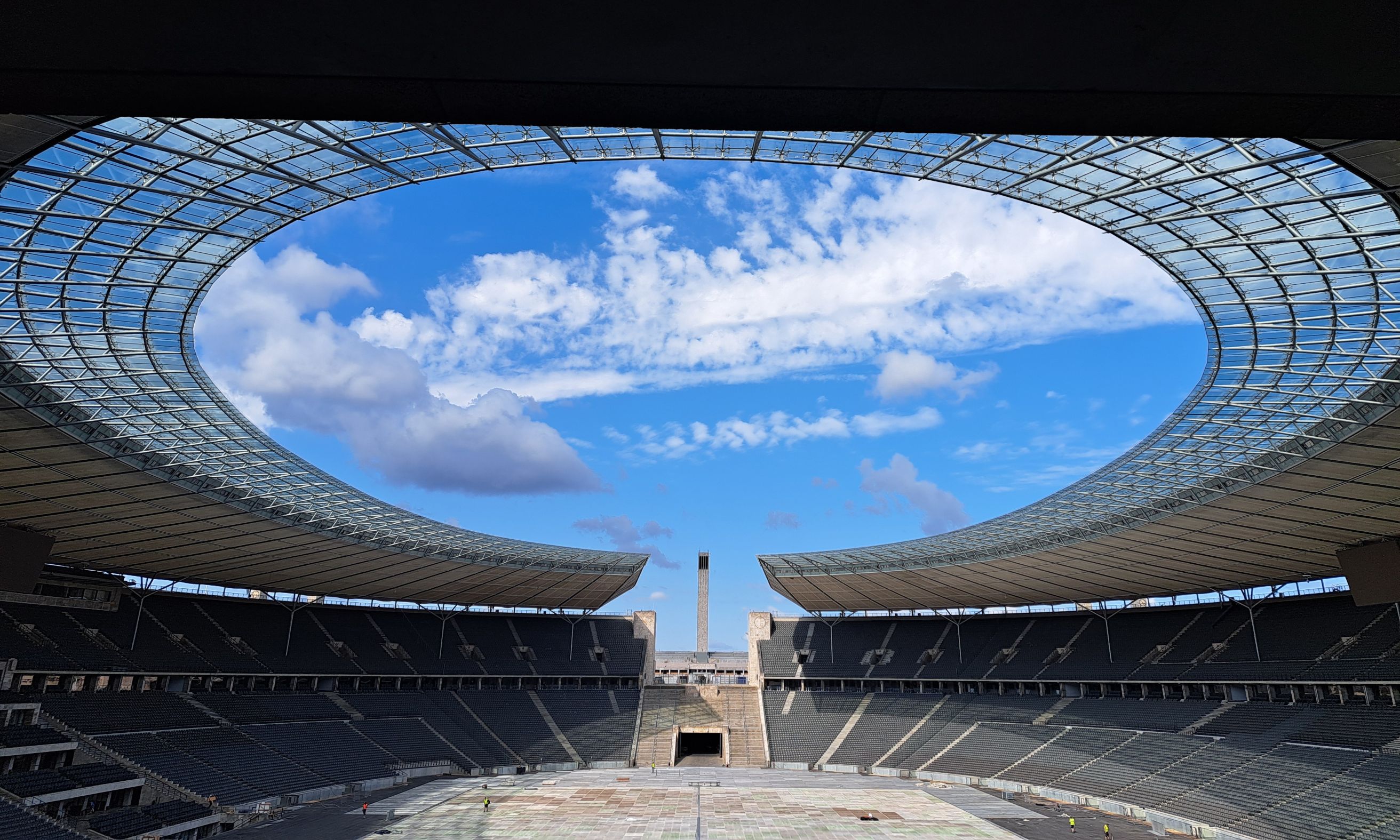
Berlin’s Olympic Stadium, originally built for the 1936 Olympics under the Nazi regime, stands as a stark survivor of Germany’s darkest chapter. For me, it’s more than stone and steel, it’s another of Berlin’s monuments which have been transformed into a symbol of democracy and renewal. Today, it reverberates with the roar of thousands at major sporting events and concerts. Like so many others, I pass through its colossal gates, take my seat beneath its saucer-like roof, and admire its architecture mindful of its past, yet looking steadfastly toward the future.
A few kilometres away, another iconic structure tells its own story of speed, innovation, and endurance: the AVUS Tribüne. Once part of the legendary AVUS racetrack (Automobil-Verkehrs- und Übungsstraße) construction began in 1913, was completed in 1921, and its inaugural race took place that same year. Not only was it the world’s first motorway, it also served as a daring racetrack; in 1936, a reconstruction of its northern curve made it the fastest circuit in the world. Thanks to entrepreneur Hamid Djadda, this grandstand’s heritage has been preserved and revitalised into a vibrant events venue. It still gazes over what was once a proving ground for racing pioneers.
With my time in Berlin drawing to an end, I settled into the hotel’s courtyard for one last drink, reflecting on a city that is constantly evolving, shaped by its history, yet always moving with the times, much like Hotel Berlin, Berlin itself. Its many unique faces, born out of freedom, are lessons we carry with us wherever we live. And as I sat there, I finally felt the full meaning of John F Kennedy’s famous words: “Ich bin ein Berliner.”


